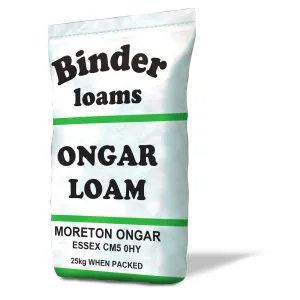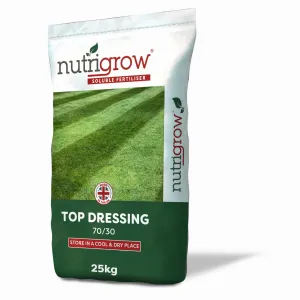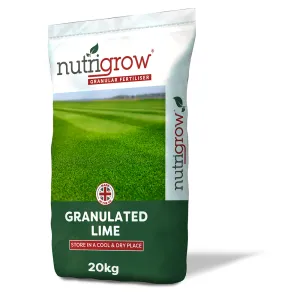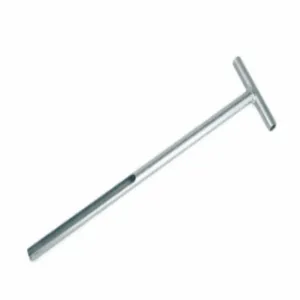Consistency and texture
Healthy soil will have a soft, crumbly texture when damp. The crumblier the soil, the better quality it is. Good soil needs to be loose enough for root growth – if you can dig down 2-3ft without too much difficulty, the chances are your soil is a decent consistency.
The texture of your soil depends on the volumes of sand, silt, clay and organic matter in it, and different soils have different volumes of each.
A heavy clay soil is unlikely to crumble, but it is technically possible to enhance it with the addition of improvers like Gypsum - together with organic matter.
Conversely, a sandy soil can be balanced with the introduction of clay improvers and organic matter.
 When it comes to soil, the crumblier, the better
When it comes to soil, the crumblier, the better
Organic matter includes plants, animals, and insects (or other compounds derived from living things) in various stages of decomposition. Humus is organic matter that is fully decomposed and is very rich in nutrients.
The organic matter in soil influences the structure of soil, and it is the structure that regulates the movement of water and air, affecting the availability of nutrients for plant health.
A soil lacking in organic matter can be revitalised by the addition of soil improvers such as fertiliser, compost, manures, and soil conditioners.
Loam is a soil mixture of sand, silt and clay, usually with the balance of 40% sand, 40% silt and 20% clay, and is good at retaining water and nutrients in the soil.
You will often see loam named by its dominant particle, i.e. clay loam, or sand loam. Take a look at our guide to the differences between topsoil and loam.
Colour
The colour of soil can vary greatly depending on your location, environmental conditions, the mineral content, and the organic content of your soil. Generally speaking, the colour of soil can indicate the land’s fitness for growing.
While the ideal colour of topsoil is medium to dark brown, darker soil is considered to be richer in organic matter, meaning it is likely to have the ability to deliver more nutrients to plants.
Conversely, pale yellowy coloured soil may indicate a lack of organic matter, nutrients and a poor structure. Grey soil can indicate poor drainage and low oxygen levels.
 Dark soil is richer in organic matter
Dark soil is richer in organic matter
The iron content of soil can also influence its colour. A well-draining iron-rich soil will help it form red oxides giving a red tinge to the soil – but a blueish green colour can be seen in poor draining or water-logged soils.
Moisture retention properties
As most gardeners know, sandier soil will be freer draining, while soil heavy with clay will increase water retention. Sandy soils tend not to get waterlogged but can dry out more quickly in the summer.
Effective soil will have good drainage but will also have the ability to retain enough moisture to deliver it to plant roots. Broadly speaking, this means it will have a good balance of sand for drainage, and clay for water retention.
Ideally, you would not have a situation where water sits on top of the ground long after rain has fallen, or the soil is washed away after rain. Most plants do not like to be waterlogged so good drainage is essential for healthy growth.
If you have aerated a lawn to improve drainage, you might want to consider top dressing which will filter into the holes to improve the rate of grass recovery and guard against winter desiccation.
You can improve the drainage properties of your soil with soil improvers, horticultural grit, organic matter, and well-rotted manure.
Worm and bug life
Healthy soil will have visible insects and earthworms at work - a positive indicator of soil health. You should be able to see these creatures in the top six inches of soil.
When adding organic matter, compost or top dressing to your soil, these living creatures will help ‘pull’ it further down into the soil – benefitting plant roots and overall plant health.
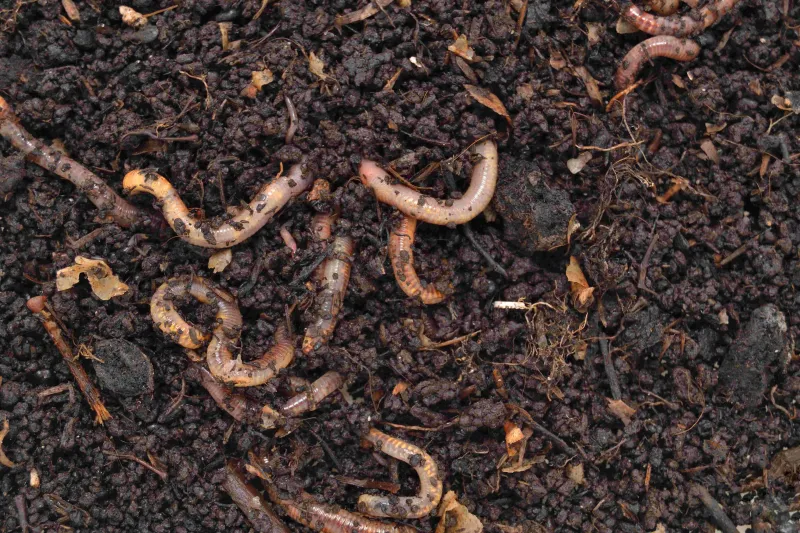
Earthworms – the gardener’s best friend
Earthworms and other insects process and recycle organic matter adding more nutrients to the soil from their enriched casts. But they also improve drainage by adding open channels through their natural tunnelling and burrowing behaviour.
You can encourage earthworms to your soil by increasing organic matter, keeping soil moist, reducing soil compaction, and managing your soil through weather extremes.
pH balance
Whilst a pH level of 7 is considered neutral, having a soil pH of between 5.5 and 7.5 is ideal for most plants. These slightly acidic conditions are also preferred by earthworms and other microorganisms that help convert nitrogen for plants to use.
There are many factors that will influence the pH level of soil, including the type of organic matter that may have been added to it, and the amount of rainfall in your region. A lot of rainfall can wash away calcium and other alkaline elements leaving you with a more acidic soil.

A pH of between 5.5 and 7.5 is ideal for most plants
If you’re using a pH soil meter, the following ranges will give you a good indication of the acidity / alkalinity of your soil:
- pH 0.0 – 4.0 indicates very acidic soil.
- pH 4.1 – 5.5 indicates acid soil.
- pH 5.6 – 7.5 indicates neutral soil.
- pH 7.6 – 8.5 indicates alkaline soil.
- pH 8.6 – 14.0 indicates very alkaline soil.
You can live with the pH level of your soil and simply select plants that are happy growing in it; if your soil is very acidic, there are those plants that love it! Of note are rhododendrons, azaleas, and blueberries – all of which prefer a soil measured at around 4.5 on the pH scale.
Alternatively, you can alter the pH level of your soil by adding either granulated lime to raise the pH level or elemental sulphur to lower it.
It’s always best to sample test your soil to ensure you can accurately re-balance the pH of your soil – rather than guessing its acidity. It’s also worth understanding the texture of your soil – as more material will be required to alter the pH level of a clay soil over a sandy soil, for example.
Use our soil analysis kit and service to correctly identify the pH level of your soil and to receive recommendations for soil health improvements.
For questions and specialist advice, get in touch with our Tech Team today.




